When you dared to become a parent, you probably had no idea what a journey you were setting out on… how strongly you would want your child to flourish and succeed… and how barriers to that flourishing would hurt your parent heart.
Being a parent of a child who has been hurt, taken sick, or wounded… or who is simply not thriving as you feel they could… hits you hard.
So you do your research, and you do your best to wade through a lot of information. Maybe you find information about the addictiveness of sugar; or the benefits of traditional foods, cod liver oil and fatty acids; going gluten or grain-free, how important probiotics are, how bad processed foods are, the many uses of bone broth, etc.
Then you stumbled on the GAPS Protocol — the diet, supplement, and detoxification program designed to repair and seal the gut; restore body and brain; and heal autism, no less! You read the book and its amazing and makes so much sense. You feel this will help your family thrive in many ways and you want to begin making changes for your child.
But you have no idea where to start. Changing your family’s diet is completely daunting and you have so many questions.
Having brought hundreds of people through my online GAPS Class, I’ve walked through these transition questions. Below are some of my recommendations for easing into GAPS and grain-free living.
Disclaimer, these recommendations assume you have read the GAPS™ Book at least once.
#1: Journal where you’re at
This is an important first step and can be as simple as a single jotted list that includes each family member, along with their frequent symptoms, moods, and food issues.
Because we forget. So write them down, and you’ll be able to look back and see patterns, and note triumphs.
#2: Change breakfast
Why? This meal, more than any other in the day, sets your pattern of even blood sugar regulation throughout the rest of the day. For this reason, this is the first meal I recommend (gradually) changing to Full GAPS first.
Having a balanced breakfast… with good fats, healthy proteins and low-glycemic veggies… will bring leveled blood sugar that helps kid’s moods, and gives them stable energy… which benefits everyone! Removing the sugary foods also reduces the “food of choice” for pathogenic microbes.
A HEALTHY BREAKFAST FOR BLOOD SUGAR
For example, eggs scrambled in butter with a side of avocado and salsa and homemade sausage patties or sugar free bacon. Protein + fat + healthy carb in the form of vegetables.
This feels good…satiating…never in a state of emergency…balanced.
AN UNHEALTHY BREAKFAST FOR BLOOD SUGAR
For example, a bowl of cereal with lowfat milk, banana, glass of orange juice, coffee w/ cream and sugar. Sugar + sugar + sugar + sugar + caffeine + tiny amount of fat.
Every one of the above items (with the exception of the cream) is going to turn to sugar really quickly. Just as quickly the blood sugar spikes past the safe upper limit.
To your body, this is a state of emergency and sets off a chain of hormone messages, insulin being just one of them. Blood sugar levels go back down but so much insulin was pumped out that the blood sugar goes too low, below the safe limit. Sugar high… sugar crash.
#3: Work up to a therapeutic dose of probiotics
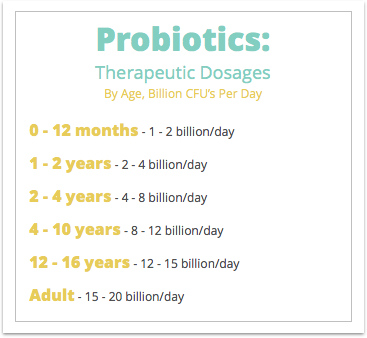 Aside from the power of food, probiotics can make a big difference, if they are taken in therapeutic amounts.
Aside from the power of food, probiotics can make a big difference, if they are taken in therapeutic amounts.
This can be dramatically helpful for moods and can help pave the way for further changes. They are also relatively easy to introduce to kids.
Good probiotics, like GutPro or BioKult, can simply be sprinkled in food or drink. Here is a guide to therapeutic doses (which should be maintained for six months).
Remember to start out very small and watch for the so called die-off reaction, when pathogenic microbes get crowded out and “die-off” too quickly, sometimes they cause unpleasant reactions.
#4: Replace favorite foods and baked goods
Replace your child’s favorite foods with homemade, grain and refined sugar-free alternatives. Is your child’s favorite food chicken nuggets? Then search online for “grain free chicken nuggets”, or “GAPS Diet chicken nuggets”… you’ll find many alternatives to experiment with and enjoy. Homemade versions will take more time and effort, but they are made with love, and the power of having a hand in bettering your family’s health.
Replace your baked goods with winning grain free recipes (to give you some ideas, google “Honest Body muffin” or “Honest Body cupcake”)
#5: Make broth and use it for soup 1-2x a week
Since this is a foundation of the healing food aspect of GAPS, this skill is important. It can seem difficult, but is really easy once tried. The Weston Price Foundation has great videos and articles that make broth making easy to understand.
Don’t worry if soups aren’t immediately liked by all, the Introduction diet has a way of powerfully shifting taste buds. Your soups will start to taste awesome and rich with real stock, good sea salt, healing animal fats, and high quality meats and veggies.
#6: Add epsom salts to your kids’ baths
This is a fun and easy step. Detox baths are an important component of the Detox part of the protocol and if your kids already take baths you can simply start adding 1/2 – 1 cup of epsom salts to their bath. Try this one. Alternatively, you can try baking soda, sea salt, clay, or seaweed powder.
#7: Add one full GAPS meal a week
When you have GAPS breakfasts in your skill set, gradually add in one new GAPS meal a week. Start incorporating GAPS dinners for example, and then snacks, and then school lunches.
#8: Work backwards then forwards
I like to recommend that families actually work backward, having a good grasp on Full GAPS, then working backwards through the 6 stages of the more intensely healing “Introduction diet,” THEN commencing on the Introduction diet as originally laid out. I feel this allows for a less “cold-turkey” approach to Intro, and the easier stages come first. What does this look like?
When the family is fully transitioned to Full GAPS, and the GAPS cooking skills aren’t “foreign,” set your date for Intro. Then take a week (or two) to work backwards through the six stages of Intro, starting with Stage 6, then Stage 5, Stage 4, and so on.
#9: Tips for getting young ones to eat broth
- Serve in special cups alongside each meal and require that broth be eaten before the “tastier” foods
- Flavor well with garlic, salt and herbs
- Let them sip with a straw
- Add pure beef gelatin (like Bernard Jensen’s) to warm broth and let it turn into a broth “jello.” This can be served in different shapes, etc.
- Puree into creamed vegetable soups
- Reduce down to a “gravy” for meatballs and vegetables
#10: Example script for explaining GAPS intro
As far as talking to little folks, advance preparation is good. Talk to them about what is going on their body in simple terms and how this protocol is going to help make them strong and well.
HERE’S A SAMPLE SCRIPT
“Your body has all these little helpers (teeny tiny “bugs”) inside, but in today’s world our bodies can also get too many not-so-helpful “bugs” (or insert whatever word appropriate for your small one). So we need to have a diet for a while that only feeds the good bugs and makes them stronger so that they can do their jobs. This diet can also help us by repairing our tummies, our muscles, our bones, all the parts of us.
For a little while though, while the “bad bugs” are dying off, we can feel yucky. We can’t avoid that part, but I will help you as much as I can to get them out… we’ll take special baths, we’ll do enemas (insert child appropriate explanation of enemas) we’ll get fresh air and sunshine, we’ll watch some movies and read books together… (insert favorite activity of choice).”
I also find it helpful to show them the stages and read to them what they can eat on what stage. Then you can kind of make the list the “heavy” or the “authority” rather than you.
May your GAPS adventures be rewarding and may you discover the power of healing foods.
 Melanie Christner delights in helping you apply healing protocols to everyday life, while eating really great food…and becoming friends with your body again. She teaches an online GAPS Class and writes at HonestBody.com. As a mom of four children herself, she works with moms and their kiddos to help them feel their best and to have all the life and energy they were meant to have. Melanie is an NTP, and Certified GAPS Practitioner in Vermont. You can find her in her kitchen, or Nordic skiing, or swimming in the Green Mountain rivers with her family.
Melanie Christner delights in helping you apply healing protocols to everyday life, while eating really great food…and becoming friends with your body again. She teaches an online GAPS Class and writes at HonestBody.com. As a mom of four children herself, she works with moms and their kiddos to help them feel their best and to have all the life and energy they were meant to have. Melanie is an NTP, and Certified GAPS Practitioner in Vermont. You can find her in her kitchen, or Nordic skiing, or swimming in the Green Mountain rivers with her family.

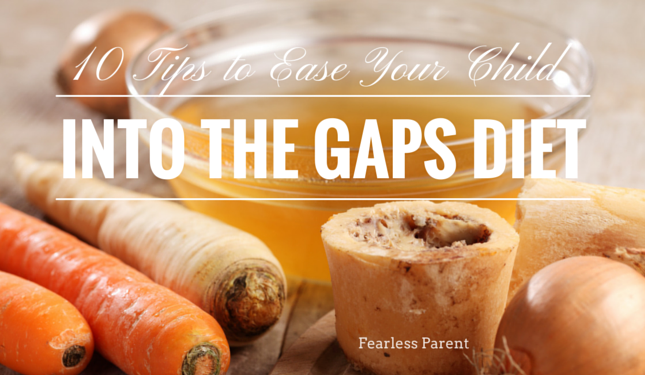


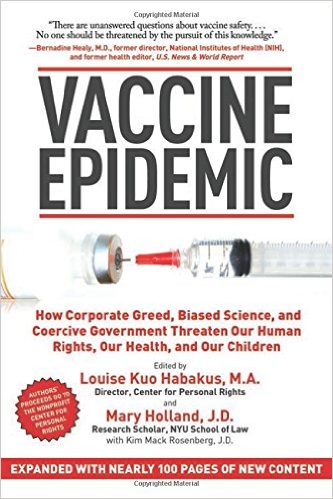




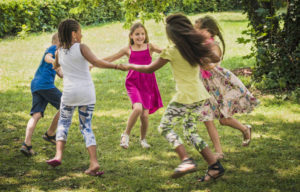
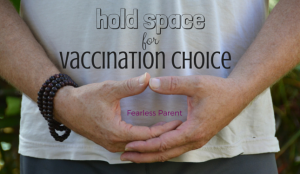


I am thinking about starting this diet especially for my three year old son who has difficulties with ASD but th hardest part is what is my son going to drink since he prefers cow’s milk to anything else pls help!! Thanks a lot xx
Hello Anonymous,
This dependency on cow’s milk, as a drink, is one of the very symptoms of GAPS…its a physiological issue that needs the protocol to address.
I would recommend two readings for you.
1. First the GAPS book, which explains what is going on with gluten and casein (wheat & milk proteins) and how they become addictive to those with a compromised gut.
2. The GAPS Stories book, which has inspiring stories of a few mothers who have overcome extremely picky eating.
Our ten month old is struggling with eczema and Ige dairy allergy. We would like to try GAPS but don’t know what todo about the fermented dairy on whish it relies so heavily. Please help, we are desperate to help this little one.
Hello Claudia,
Thank you for the question. Whatever food sensitivity your child may have can be passed over initially. You may find your child is able to tolerate fermented/properly prepared dairy further along in the protocol, but in the beginning you can avoid it. There are many other healing foods to depend on in the Introduction diet.
This “adapting” is what I do with my GAPS clients regularly…combining GAPS with MRT food sensitivity testing, which allows for a bio-individual plan that removes foods that are difficult for that person.
Hi…plz guide me how to start gaps diet for 4 yrs old n 7 yrs old…stages n recipes..from where can i get please?
Hello Samina,
Thank you for your question.
Here are some options:
1. For the Do-It-Yourselfer, I would recommend the Heal Your Gut cookbook, which has recipes for all the stages of GAPS.
2. My website has a lot of resources for GAPS, namely the GAPS Class which includes recipes, stages, and so much more of the details…including myself as a GAPS practitioner doing Q & A in a private forum.
3. Here is a free online class I’ve done on the GAPS Introduction diet for Families that you may find useful – https://honestbody.wistia.com/medias/8aza3vzhy4
May these resources be of use to you 🙂
Warmly,
Melanie
Im living in UK
Hello Melanie,
I want to start the GAPS diet with my three year-old daughter. She has a speech delay but the problem is that she doesn’t want to try any new foods. I struggle a lot to try to feed her new meals and new drinks. I’m in the process of getting rid of milk, which she loves. Please help me start this diet with a very strong-willed girl. Thank you for sharing any books, websites, or other information.
Hello Angela,
I would recommend that you add in 1 GAPS meal per week, substituting GAPS versions of her “normal” foods, and introducing the nourishing foods, while at the same time removing the main offenders (in her case milk). At some point you’ll probably meet resistance…meet it with patient, cheerful resistance right back 🙂 She is three, you are mom, what food is provided is what is available to eat. This is the BEST time to have her learning nourishing food habits.
It is also helpful to get therapeutic doses of probiotics in to start displacing the not-so-helpful bugs that want the food that they want.
Thank you for this post! I’ve just finished reading the GAPS book and went online searching for additional advice for converting myself and my 2 yo on the spectrum to the diet. I found your info super helpful! I had been thinking about the gelatin trick to make the broth more jello like but was unsure if that was legit or maybe not diet friendly. Thank you thank you thank you 🙂
You are welcome, Rachael 🙂
Thank you for this information. I am thinking that my daughter is sensitive to eggs. What can I use in place of them for the recipes and breakfast? Thank you <3
Hello cwray,
If she is sensitive to eggs you have a few different options:
1. Try duck eggs instead…many can tolerate duck who can’t tolerate chicken eggs.
2. For baking, use a gelatin egg (outlined in this post http://deliciouslyorganic.net/best-egg-replacement-baking/)
3. Replace egg options with meat or soup options…sugar free bacon is an option for example – Pederson’s Paleo bacon is one I like -http://pedersonsfarms.com/whole30-approved/
This is so overwhelming – I don’t know if the GAPS diet is our answer or Salicylates are the problem
Hello Camille,
Salicylates are ultimately a gut health issue, so gut healing is an important piece of the picture. It is possible to reduce salicylates while doing GAPS.
Kindly,
Melanie
I think this is a great way to do GAPS diet! My question for you is …
Doing the GAPS diet for families as you recommend above, how long do you see it taking to 1) start journaling where you are to 2) getting the family on Full Gaps diet to 3) Doing Intro to completing Intro and then finally being on Full Gaps and being done with intro.
I was going to start Intro diet in early January, but I think it will be easier to do it your way.
Hi Joy,
This can be pretty individual to what each family/person is going through, and what their calendar looks like.
Journaling can start…today 🙂
As for going backwards and then forwards, I think a month is a good timeframe for easing into Full GAPS, and then about another month to go through Intro (give or take). Then you are on the main protocol for as long as needed…generally you aren’t transitioning to non-GAPS foods until you’ve been symptom free for about 6 months.
Kindly,
Melanie
My one year old has a dairy and egg allergy. Can you give me some suggestions for breakfast?
Hello Heather,
Your little one will benefit from plenty of steamed veggies, lots of animal fats, minced meats, avocodo, cod liver oil, a little bit of banana & berries, and ferments…those kind of foods can be served at all meals. Re-think “breakfast” foods.
Kindly,
Melanie
so i am thinking of venturing this way but how do you do this for a child who has high sensitvies per sensitivity test levels of 1-6 of Dairy 3-4 all, Eggs-All 6, amaranth-3, Oatmeal-3, almonds-3, green beans-2.5, Kidney beans 2.5 it is from us biotek. We are gluten free due to my issues and he had had some gluten and it didnt even register. It is very hard to think of fun things but we eat a very nutrient rich diet. We did this due to my son acting terrible, he was a jerk, terrible outburst, terrible sleeping.
Hello Emily,
It is entirely possible to do the GAPS Diet without eggs & dairy…as for oatmeal, kidney beans, and amaranth…they are not on GAPS anyway.
Use many other vegetables besides green beans, and replace eggs/dairy with meats/stocks/soups for now, and you may find that you can introduce properly fermented dairy and eggs after a time.
Kindly,
Melanie
Hello, I’m trying to start the GAPS diet for my son who suffers from Eczema really bad. It’s taken over his life. How can I start this diet with him having so many allergies to Fish, all dairy, wheat, etc.
Hello Rita,
You may find my article on Eczema remedies helpful – https://honestbody.com/gaps-diet-eczema-remedies-tips/
Also, focus on the nourishing foods that are not his allergens…for example, use beef, bison, chicken, lamb, turkey, or pork if he is allergic to fish…use the fats (which are intensely healing), the meat, the bones, etc.
The GAPS Protocol can remedy allergies. Maybe not all for everyone, but there are many who have had allergy symptoms reverse because it addresses the root cause.
Kindly,
Melanie
Hi there, I’m about to begin the GAPS protocol with my son Tom, who is 2 years old. Tom is intolerant to fructose, sucrose and lactose, and I can’t seem to find anything in the Gaps book or on the internet about what to do regarding intolerances. Do I just avoid initially? At what point am I supposed t try reintroducing? Or is it not until the end? Thanks in advance for any clarity you can offer on the subject! Courtney.
Hello Courtney,
Yes, you can avoid food intolerances initially. Sucrose & lactose are not part of GAPS anyway (for example, all dairy is fermented for 24+ hours so that there is no lactose remaining).
I suggest retrying his food intolerances (1 at a time) at about 6 weeks in…and you can retry every 6 weeks or so, if you are not able to successfully introduce something.
Kindly,
Melanie
Hello,
On 10th of April my son was diagnosed with measles, he was given lot of antibiotics and since then he is having chronic diarrhea, doctors say that he is recovered from measles, but his gut got weak that’s why he still have diarrhea, Is GAPS diet the right thing for as to try?
Thanks Indre
Hello Indre,
Dr. Natasha Campbell-McBride recommends a round of Intro whenever someone is ill like this…especially for diarrhea. So, yes, I would suggest the GAPS Intro diet.
A time of soothing & nourishing foods like meat stock soups, fermented vegetable juice, 24+ hour cultured yogurt or kefir, and probiotics like BioKult will be most helpful.
Kindly,
Melanie
Hi,
We have started the GAPS intro cold turkey as my 8yr old son has recently been diagnosed with olgioarthritis which is affecting his knees quite badly. He is limping and it’s very painful & swollen (we’ve had them drained 3 times now & cortisone injected in but this didn’t prevent inflammation from returning).
Because our Dr wants to start us on Methotrexate next week I became quite desperate and started the meat stock & broths 2 days ago but I still don’t have a strong pro-biotic yet (all store bought ones I found had fructose & my home-made sauer-kraut is still not ready however Bio-Kult is on its way but could take couple more days) so I found a sugar-free store bought sauer-kraut and have bought kefir and yoghurt (my son has never liked diary and so it’s a real struggle to feed him these last couple) I spoon feed 1/2 teaspoons of sauer kraut juice with every meal. He isn’t really drinking the meat broth so well but he’s drinking ginger tea & water.
This morning he complained of feeling sick and vomited (very small amount)
I gave him an epsom salt bath and have just made him some tea.
I read you go backwards through the diet so I’m wondering whether I allow him some eggs this morning as he’s struggling with broths (he’s weak and has no energy) and just keep the sugar and grains out for now until we can start again properly with a proper pro-biotic?
Thanks for any advice. I’m looking to find a nutritionist too that specializes in auto-immunity.
Warm wishes,
Leoncia
Evening,
We are starting the GAPS diet for all of my family because my 3year old has autism and we are keen to get him well back on the road to recovery, We are starting with the full GAPS diet and will go back and do INTRO at a later date, but just wondering if anyone who is currently doing the diet would have any suggestions for a snack for a fussy 3 year old. I currently give him fruits that are on the GAPS allowed list, but wanting something to substitute something substantial, eg cake bar or crisps.
Evening,
We are starting the GAPS diet for all of my family because my 3year old has autism and we are keen to get him well back on the road to recovery, We are starting with the full GAPS diet and will go back and do INTRO at a later date, but just wondering if anyone who is currently doing the diet would have any suggestions for a snack for a fussy 3 year old. I currently give him fruits that are on the GAPS allowed list, but wanting something to substitute something substantial, eg cake bar or crisps.
Hi Melanie
I am extremely interested in doing the gaps intro with my four year old. There is nothing wrong with her in the sense of eczema, diarrhea, learning delays etc, but, she was prem, 576g at 29 weeks and is now 10kg at 4. She eats plain rice, pasta, tuna, apples, sausages, bacon, chips, and of course donuts, crackers etc!! In fact she would live on sweet things if I let her. ButI try my hardest not to. Im a chef and eat mainly whole food cooked from scratch. I love and believe in the work of weston price and think dr natasha’s work is amazing. My main question is, my motivation for wanting to do the gaps intro is to reset my daughter’s fussy eating, and is this whatthe intro will do? As she has no real medical issues (that I know of at the moment) she would only need to do the into to then be open to all the lovely real food that I crave to cook for her that she turns her nose up at?!
Hello
I will love to start the gaps diet for my 4yr old son who has got ASD. My problem.is he only takes cereal and wouldn’t try new foods. Please, how can I introduce him to gap diet?
Hi
My 2 year old son recently diagnosed with autism.he has digestion issues (Some times diarrhea and some times constipation).I have seen so many sucess stories in the internet through this GAPS intro diet.Just Wondering how many days do we need to follow stage 1 and then how many days to follow stage 2…….upto Stage 6.
And i have one more question if i start GAPS diet to my son does he become skinny or lean.?I cant see my son like that.can you please help me to recover my son through GAPS diet..?
Thanks
Hi Melanie,
Thanks for this great guide to GAPS. My son is 2.5 years old and has struggled with gut issues since birth. He was a very colicky baby, has had febrile seizure since 18 months old, constantly runs a temp of 99.5 to 100+ for no reason and appears to have yeast over growth consistently. We found out he also has MTHFR gene mutation which lead us to work with a functional practicioner to make sure he’s supplementing properly. He’s also had sleep issue since birth( wakes several times per night and has night terrors). Will the GAPS protocol help with these issues we struggle with? Do you see success with children that have similar issues?
I look forward to stonheeting from you.
Best,
Lauren
Hello Melanie,
We gave a 3.5 year old boy who was diagnosed to be on the ASD spectrum when he was 2.
As per his pediatrician, we had conducted a few tests (food intolerance, food allergy)and as per the results, the doc said he has a leaky gut and advised us to start the GAPS diet.
We met a dietician who gave us full breakdown of the various stages of the GAPS diet. We started following it since the 12th of October 2017 and we are currently on stage 3. His current diet consists of ginger or mint or chamomile tea with raw honey, fermented veg juice, sauerkraut, meat or fish with broth, avocado, coconut oil, veg purée.
During the initial days there was a foul smell from his mouth. He was reluctant to eat but later on got used to it. Since we have started the diet, he has become skinny, sleeps more than usual, has dark circles around his eyes, passes a lot of sweet smelling urine, prefers to sit or lie down all day long. He was been a very hyper kid but lately he has become very lethargic.
Dearest melanie We would like to know about the GAPS diet. In your opinion will this be helpful for our son? The reactions mentioned are they normal? He is also constipated and is sad most times.
We need your help it would be highly appreciated if you could respond.
Hi , i want to start gaps diet for me and my 11 month old baby with severe eczema, i breastfeed my baby but i want to start with the intro diet coz i’ve serious digestive issues and my baby is also sensitive to many foods.besides eczema he has severe colic problem and his poop is never normal, can i start with intro for me and my infant while breast feeding? And i want to start bio kult advance probiotics can i put some of its powder in my infant’s food? Coz i don’t want to give him bio kult infantis coz it has omega 3 and vit d in it, and i want to give him omega 3 in the form of cod liver oil.. plz reply me asap..
Hi Melanie,
Thank you so much for this article. I am struggling on an emotional level to put my 5 year old on the GAPS diet. I’m scared and anxious and find it very difficult to believe my son will only eat what he needs to to heal. He has anxiety around food, where he wants to eat lots of sugar and has irrational fears where he follows me around the house if I simply move to another room or especially if I go upstairs. I’m feeling so helpless and sad because I know better, but can’t find the confidence to implement.
I appreciate you taking the time to address my concern. Thank you.
Hello, my daughter is 18 month old and she says no words at all, she gives no eye contact, also doesn’t sleep much and many other problems along with these things, I have a bad feeling what the professional will say at the end and I am desperate to try anything, I haven’t slept proppley in the last 18 month and feel that I am alone scared what the future holds for my baby and me, looking at her face just breaks my heart,she loves drinking her milk, I have been giving her organic fresh cow milk but recently I changed it to goats milk cause I heard that was better but I couldn’t find the organic one so I am giving her the goat milk which says on the carton Helen Farms. Is that ok or not can anyone help me please?
Dear mama. I’d love to connect you with likeminded parents. Please email me at info@fearlessparent.org — let me know where you live and any contact info you’d be comfortable sharing. Why don’t you also buy the GAPS book? Louise x
I would love to connect at as well. I have an 8 month old with no babbling air eye contact and do not sleep ever. Just read as much as I can.
Hi Melanie
I have a son with adhd. He loves dairy product cheese.I want to start the gaps.Could u help what steps to take.please
Hello Naomi,
It is pretty common for kids to be craving the very foods that might be causing them struggles (in this case it could be dairy).
Have you read the GAPS (Gut and Psychology Syndrome) book yet? That would be the first place to start.
There are several approaches, but I might suggest going the 1 Month Approach incorporating one new Full GAPS meal in per week. Week 1 incorporate GAPS breakfasts, Week 2 incorporate GAPS lunches, Week 3 incorporate GAPS dinners, Week 4 incorporate GAPS snacks. At this point you’ll be on Full GAPS and can prepare for doing the GAPS Introduction diet.
Also, I would suggest that in the meantime, all dairy be cultured for at least 24 hours…yogurt, kefir, GAPS cheeses, etc. No uncultured milk.
Kindly,
Melanie
Thank you so Much for these tips. I am Beth from Australia. My soon to be 4 year old has regressed to a point that he does not understand me asking him to hand me stuff. He never used to eat meat and dairy and in dec 2017 he started Kefir, eggs and meat and his farts started being smelly and then loose stool then speech vanished etc. He only eats vegetables and fruit. i wish i never foloowed doctors advice and introduced those food cause he was not ready. My problem is the broth! He looked at it and almost threw up! next two weeks its school holidays and i am on a mission to get through the broth stage and will be using your advice. thank you! Oh, not having fruit at all will be challenging cause other than nuts and seeds, that’s what he snacks on!!!! Ahhhhhhh!
how much kefir should i give my autistic child who is 5
My grandson is 18 years old and is ready to “cure” his Autism. He was diagnosed with Mild to Moderate when he was 2 1/2 years old. He did not start talking until he was 6 1/2 years old. He has been back and forth between schools for children with Intellectual Disabilities and Mainstreamed Public Schools. This is his Sr. year. He is excited about graduating and he watched a video (well now several) about a man that detoxed and then began an all natural diet and “cured” his Autism. He has watched videos of severe cases of Autism having diagnoses removed from their medical record after the Gaps diet. This is a difficult situation because he has no income, he is living in a group home, and we are on SS and cannot afford to maintain our household and his living expenses also (outside of our home). We have him on weekends and breaks from school. Any suggestions?
What is a good cows milk alternative with enough calcium for a 2 year old? Our two year old has autism but she still needs cacium and all the “fortified” dairy alternative have sugars and “natural favours” (aka MSG) which is terrible for children with autism. What is a good dairy alternative for a 2 year old to drink on GAPS? Thank you for your help.
Is homemade coconut milk yogurt an cceptable substitute? Also do you have tips or product recommendations for a very tight food budget? We have egg intolerances as well (my husband and I both. Our kids have not had intolerance tests yet. I can not afford them). And apparently it is no longer duck egg season.
Hi there! My 8 year old son was diagnosed with PANS 2 years ago. He is currently in remission, but we are still healing his body. His gut is a mess and has been a mess since he was a baby. I know that doing the GAPS diet would be so beneficial for him, however, he is a restrictive eater – has only a handful of foods he will eat. Do you have any insight, experience and advice on where to go in order to implement the GAPS diet to a child that has restricted his diet so much? Thank you
Is the gaps diet any good for adults with epilepsy. I was gonna try my 5 year old son who has asd spd speech delay severe learning difficulties anxiety lack of understanding no sense of danger but there’s some foods he can’t eat and some foods he won’t because of his sensory issues
Will a GAPS diet be good for kids with food intolerances such as those with fructose or lactose intolerant?
Hi, Tamara. Yes, it’s absolutely worth a solid try — meaning keep at it, even if you aren’t getting the immediate improvements that you are seeking. Remember that health conditions do not appear overnight and healing doesn’t turn on a dime. Let us know how it goes. Blessings, Louise